Are you looking for web development stacks to build your projects in 2025?
Web development has come a long way in the last few decades. Unlike years back when it was tied to just HTML and CSS, there are many technological innovations that have revolutionized the website-making process.
A recent survey on web frameworks aimed to break down developer trends gathered close to 60,000 respondents who admitted to using one web framework or the other in less than a month.
This shows that developers are using these technologies as they occur to make their web development journeys more efficient.
The technologies and languages enable individuals to create a wide range of complex web applications that offer great value to internet users. Much of these developments can easily be attributed to technology stacks.
Whether you are new to web development or looking to broaden your skillset, it helps to understand the most popular stacks needed to make fully functional web apps.
This article will explore 8 of the best web development stacks for 2025:
- MERN – Best Stack for React.js
- MEAN – Best Stack for Node.js
- LAMP – Best Stack for WordPress
- MEVN – Best stack for Vue.JS
- Ruby On Rails – Best Stack for Ruby
- Django – Best Full Stack for Python
- NET – Best full-stack development for Microsoft
- JAMSTACK – Best for Static Sites
What is a full development tech stack?
A full development stack is a combination of technologies that you can use to build an entire application. Usually, this will include the tools you can use on the front-end, and back-end, programming languages, and frameworks, a database as well as APIs needed to ink the front-end to the back-end.
A full development tech stack allows full-stack developers to build end-to-end applications quickly and with ease.
The Best Web Development Stacks for 2025
There are many web development stacks that you can use for your project. Below are 8 of the best web development stacks for 2025
1. MERN – Best Stack for React.js
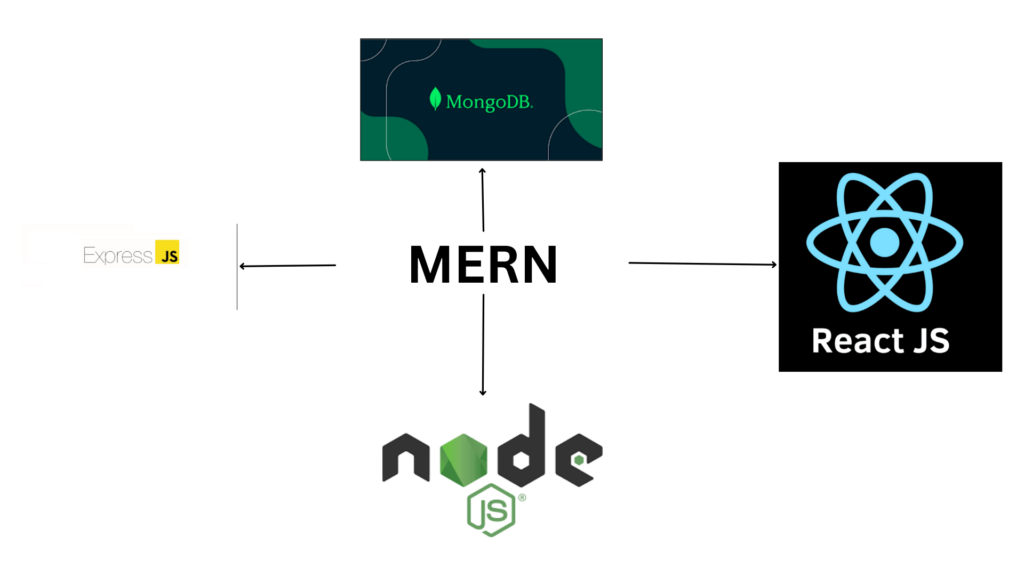
MERN is a JavaScript tech stack that allows developers to build fully functional web apps using the JavaScript language and JSON. The stack allows for faster web development and is a popular option for many JavaScript developers.
Developers can use MERN to implement the 3-tier architecture that includes a front-end, back-end, and database. This makes it easier to create a wide range of web applications such as interactive forums, calendars, to-do apps, and single-page applications (SPAs).
Components
The MERN stack is a combination of 4 technologies, namely:
- MongoDB – MongoDB is a NoSQL database that allows the handling of documents for your website. It allows developers to create databases, schemas, and tables to handle different types of databases for their websites. MongoDB also comes with a shell that provides an interface for developers to use JavaScript to manipulate data.
- Express.js – Express JS is a backend framework that provides a wide array of middleware to keep your backend running.
- React.js – This is a front-end framework. It provides all the tools needed to create user interfaces for single-page applications and mobile apps.
- Node.js – Node.js is a server-side environment that allows developers to build scalable network applications. Its work is to allow code to run on the server.
Combined, the components make it easier for full-stack developers to build fully functional websites.
MERN is the best stack for REACT.js because the components involved allow developers to use this front-end framework (React UI Frameworks) effectively in building user interfaces with varying levels of interactive elements.
Also, considering that more than 30% of professional developers use React.js, it makes sense to use a stack that fully supports it.
Other than its wide range of use cases, developers working with MERN get to enjoy benefits such as:
- Speed – MERN is faster than traditional servers. Its speed makes it easier for developers to make small apps.
- It is better for user experience – MERN allows for the development of responsive applications which are great for user experience.
- It has a modern and easy-to-use server. The Node.js server is built to save time and CPU bandwidth allowing developers to work more effectively.
2. MEAN stack – Best Stack for Node.js
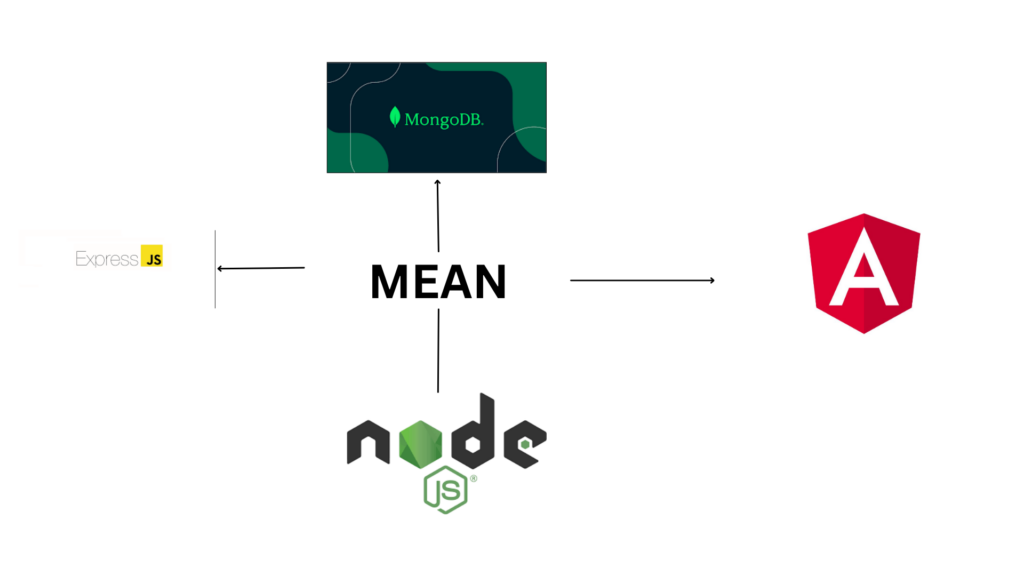
The MEAN stack is yet another end-to-end JavaScript tech stack for building full-stack web applications. It allows developers to use JavaScript and JSON to build highly functional, responsive websites and apps, making it particularly adept for event-driven architecture where responsiveness and real-time updates are crucial.
MEAN works well with cloud-native applications. This makes it a great option for anyone looking to build highly scalable, flexible apps.
The Angular framework on the front end also makes it a great option for Single Page Applications (SPAs). MEAN is the best stack for building Node.js applications because some of the components such as Express.js and Node.js were developed to work with the server.
You can create a MEAN platform by using a Node.js Hosting Provider.
Other scenarios that would work well with Mean.js include making:
- Expense trackers
- Calendar apps
- News aggregation apps
- Mapping and location-finding apps
Components
MEAN shares some similarities with MERN. They use some of the same components and frameworks. Like MERN, mean is a combination of 4 technologies namely:
- MongoDB – MongoDB handles web application data. This could include content, user profiles, events, uploads and so much more. MongoDB is a great option for this stack because it allows you to scale as your web application grows.
- Express.js and Node.js – These two work together on the backend to handle a wide range of functions that allow the database and your front-end to work seamlessly.
- Angular.js – Angular is responsible for the front-end or client-side part of your web app. With it, you can extend your HTML tags and create a more dynamic feel for your website.
Individually, each framework and technology makes MEAN a suitable stack for many applications.
Some of the benefits of using the MEAN stack include:
- It is scalable- MEAN’s ability to scale makes it a great choice for cloud-native apps.
- It is popular – Both Express and Angular.js are one of the most popular frameworks for JavaScript developers. They receive a lot of support from developers from all over the world making them some of the most stable frameworks to work with.
- It is open-source – All of the components used to make up the MEAN stack are free and open-source. This provides unlimited opportunities for developers to build any kind of web application.
3. LAMP – Best Stack for WordPress
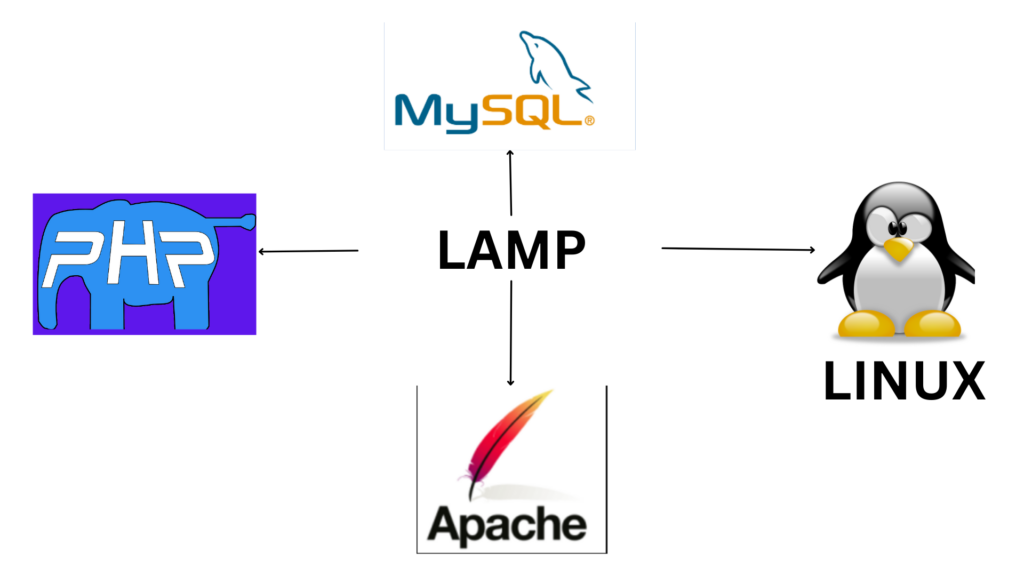
LAMP is one of the most common software stacks for web developers. It is, after all, one of the first open-source software stacks to be used to create web applications.
Its combination of components makes it a favorite for many web developers looking to create custom web apps. It is also considered the best stack for WordPress due to its ability to have in one place the Linux OS, Apache Server, PHP, and Mysql servers connected together which makes it possible to run WordPress.
You can find a lot of VPS and and WordPress hosting providers that offer LAMP eviorement ready for host your WordPress CMS.
Components
LAMP works in 4 layers, and each layer is a component that is responsible for the overall success of the stack in web development.
The components include:
- Linux – Linux is a free and open-source operating system with worldwide popularity. It sits at the lowest level in the LAMP stack and provides a highly flexible and configurable operating system.
- Apache – Apache, the second component on the stack, is a web server. It is responsible for receiving web requests, processing the requests, and returning responses Via HTTP. It allows users to access the application through a web URL after it is deployed.
- MySQL – MySQL is an open-source relational database management system for storing application data. It can handle a wide range of complexity allowing both small and large sites to operate without losing data.
- PHP – PHP is the last component of the stack. It is an open-source scripting language that is suitable for creating dynamic web pages. As a tool, PHP comes in handy when increasing the functionality of your HTML and CSS code.
Developers who use LAMP get to enjoy advantages such as:
- Diversity – LAMP can be used to create both static and dynamic websites. A static page provides uniform information to all users on the internet.
- It is efficient – compared to other stacks, LAMP has stood the test of time. Its wide support and numerous testing make it an efficient stack to set up and use.
- It is open-source – Every component within the LAMP tech stack is free and open-source. This allows developers to use LAMP to build anything.
4. MEVN – Best stack for Vue.JS

MEVN is an open-source end-to-end JavaScript stack used to build dynamic web applications. It includes MongoDB, Expressjs, Vuejs, and Nodejs, great components for building interactive user interfaces. The stack is relatively new compared to other stacks such as MERN but is a great option for front-end developers.
Regardless, it has all the components needed to make it suitable for both front-end and back-end development. Developers can use MEVN to build dynamic web pages as well as a wide range of web applications that accept user data.
MEVN is a special configuration that let your run Vue.js because others like MERN and MEAN don't let you integrate this technology.
Components
Like other tech stacks such as MERN and MEAN, MEVN uses JavaScript on all levels allowing for easier and more efficient development.
MEVN components include:
- MongoDB – MongoDB is a document-oriented database that’s responsible for handling website data.
- Express.js and Node.js – These two work on the backend to handle different requests.
- VueJS – This is a front-end framework that is fast becoming popular with JavaScript developers.
Some of the benefits of using the MEVN tech stack include:
- JavaScript on all levels – This makes it easier for developers working together to be more efficient. It also makes it easier for organizations to find and use readily available talent.
- MVC architecture decouples each tier of the web application making it faster and more efficient.
- Some frameworks such as Vue.js are easy to learn for aspiring JavaScript developers.
5. Ruby On Rails – Best Stack for Ruby
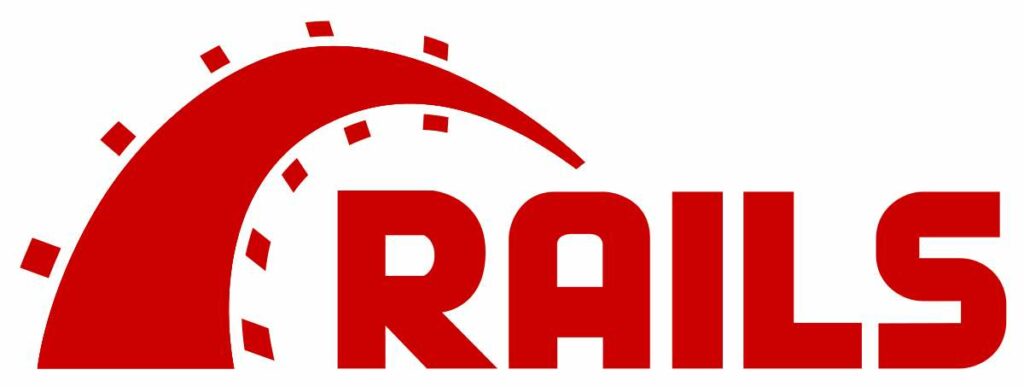
Ruby on Rails is a web development framework that’s written in Ruby. Currently, it is the best-known framework for the Ruby programming language.
Like other popular frameworks, Ruby on Rails uses an MVC architectural pattern. This allows developers to split a web application into three i.e.
- The model – This provides a structure for the database and allows developers to structure the database.
- The view – This represents the visual art of your web application
- The controller – This connects the model and the view by allowing you to write business logic.
The MVC pattern allows Ruby on Rails to work with other components such as HTML, CSS, and JavaScript to create dynamic web pages, as well as XML and JSON for data transfer.
Read More: 9 Best Ruby on Rails Hosting (with Cheap Plans)
Components
Unlike most of the tech stacks on this list, Ruby on Rails comes with a simple combination of components.
These include:
- Ruby – Ruby is an open-source programming language whose diversity allows developers to build all sorts of applications including web development, data processing and so much more.
- Rails – Rails is a full-stack framework that provides a pre-built structure for developing web applications. It is one of the most popular Ruby frameworks.
Developers can use Ruby on Rails to render HTML templates, configure and update databases as well as work with WebSockets, and much more when building web applications.
Some of the benefits of using Ruby on Rails include:
- Ruby focuses a lot of energy on testing. This makes it an ideal option for a testing framework.
- It uses the Rapid Application Development model which is great for many businesses looking to build fast.
- It is easier to detect and correct errors using Ruby on Rails because it uses a precise amount of code.
When you hire a Ruby on Rails programmer, prioritize experience, as the framework’s blend of conventions and flexibility can accelerate development but also adds complexities.
6. Django – Best Full Stack for Python

Django is a high-level web development framework written in python. It is, currently, the best framework for python developers looking to build dynamic web applications.
Django’s primary objective is speed allowing for the development of quick and safe web apps. The framework uses an MVT architectural structure which effectively splits the code into three i.e.
- The model – The model acts as the data interface. It allows developers to create the structure for the database.
- The View – The view handles the interface that people see when they visit a particular website. The view will handle HTML, CSS, Jinja, and JavaScript.
- The Template – The template handles all the static components of the website.
Django’s ease of use, flexibility, and scalability has seen it grow in popularity over the years. Currently, some of the most popular companies such as Instagram, Mozilla Firefox, Pinterest, and YouTube are using Django on their backend.
Other areas where Django can work include:
- To create the backend of web applications and APIs.
- For fast development of MVPs.
- As an alternative ORM tool for databases as opposed to conventional database queries.
- To build Single Page Applications.
If you want give a try to Django you can immediately try to create an enviorement by using the VPS of the following providers: Top 5 Best Django Hosting Providers (with Cheap Plans)
Components
Django is different from other full-stack web frameworks like MEVN because of the components involved in making the stack.
Technically, and by definition, Django is not a full development tech stack. Rather, is it primarily a backend framework?
It does, however, allow the configuration of the front-end through the MVT pattern.
Developers can, therefore, decide what other components they would like to attach to their Django framework to make up a working full development tech stack. For example, a developer might decide to use Django on the backend and connect it with a front-end framework like React.js using an API.
Also, unlike some of these stacks that come with a pre-defined server, Django is open to whatever compatible server a developer is comfortable with.
Some of the advantages of using Django include:
- Fast – Django is written in python which is a powerful and versatile language.
- OS agnostic – since Python can run on all of the most popular operating systems, Django can work on them too.
- Open-source – The fact that Django is open-source means it is free to use for everyone. Not to mention it has a powerful community behind it.
7. NET – Best full-stack development for Microsoft

.NET is a software development framework that allows developers to build and run applications on Windows. It was created by Microsoft and is currently the best stack for Microsoft products.
.NET contains developer tools and languages to build websites, desktop apps, and services that run on Windows. The framework also supports different programming languages such as C#, Visual Basic, and F#.
Hosting .NET framework isn't really easy and sometimes can be expensive than other platforms anyway we have listed the best asp.net providers to make it easier.
Components
The .NET framework does not work like the common web development stacks. The framework comes with two major components. These include:
- The Common Language Runtime (CLR) – CLR is the execution engine that runs the applications. It is the virtual machine component that provides services such as thread management, memory management, remoting, and robustness to make the development process easier. The CLR also makes it possible for different programming languages and libraries to work together.
- The Class Library – This contains methods and functions that can be integrated into the CLR to enable the implementation of the core purpose. For example, the class library contains methods that allow the manipulation of files.
Its architecture is built to combine all the .NET applications written in different programming languages and compile them in a language-agnostic Common Intermediate Language(CIL). Once the code is compiled, it is stored in assemblies. These are files that contain .exe and .dll extensions. Afterward, it is now up to the CLR to turn the running application into machine code for execution.
Some of the benefits of using the .NET framework include:
- Versatile – Its list of extensive tools and class libraries makes it possible for developers to be productive.
- Secure- The framework has robust security features which protect both users and applications from malicious infiltration.
- Open-source – The .NET framework is free and open-source with thousands of programmers and companies contributing to making it better.
8. JAMSTACK – Best for Static Sites

JAMSTACK is a web development architecture that combines statically generated pages and assets with JavaScript and APIs to make a website more dynamic and increase its capabilities.
Ever since it was coined in 2015, JAMSTACK has been an increasingly favorite option for developers looking to improve their workflow and user experience. Given its emphasis on statically generated pages, JAMSTACK has grown to be the best framework for building static sites.
Imagine a developer wanted to create a web application that tells users about the current weather conditions in their area. Initially, when the user accessed the website, the backend would have to generate the HTML pages before sending them to the user.
This is a slow process and might end up affecting user experience.
With JAMSTACK, the web developer only needs to create HTML pages (static pages) for their web application. They then use APIs to collect all the weather information on their current location and display the content dynamically.
JAMSTACK allows for the front-end to be decoupled from the backend thus preventing the backend from dictating the web experience. In this example, static pages are generated in advance and distributed through a Content Delivery Network (CDN). The dynamic parts of the websites are available on request through API calls.
Components
Initially, JAMSTACK was named JAM stack, and the JAM represented JavaScript, APIs, and Markup. The idea was to decouple web applications.
Currently, however, JAMSTACK has evolved to refer to a broader architectural approach to building modern websites. Developers using JAMSTACK use the microservice architecture approach where the web application is broken down into smaller chunks that only run when needed.
There are a number of benefits to using the JAMSTACK. These include:
- Better performance – Websites created using JAMSTACK are faster compared to other dynamic websites. Since the backend does not affect the front-end, static pages load faster. Also, CDNs are widely distributed making it easier for users to load pages faster regardless of their geographical locations.
- Better security – Due to the decoupled nature of the architecture and the fact that some of the services provided come with proper security systems, developers no longer have to worry about database or back-end vulnerabilities.
- Scalability – Given that the front-end is fast and the back-end is lightweight, it is easier to scale web applications.
Read More: 15+ Best GatsbyJs Themes for Jamstack
FAQs
According to Nearsure, the MEAN stack is the most popular web development stack.
The demand is likely because MEAN uses JavaScript as an end-to-end language. JavaScript is one of the most popular web development languages. Its popularity is also due to the fact that it allows developers to build highly responsive web applications quickly.
According to Stack Overflow’s survey, JavaScript and React are the most popular technologies used in web development. This means that most developers are likely to work with a full stack that has React.js and JavaScript. Also, developers tend to work with the most in-demand stacks for different reasons.
Therefore, borrowing from this survey, it is safe to say that the MERN stack is the most in-demand full-development stack for anyone looking to build a career in web development.
Picking the right stack for your web development allows you to build web applications that provide value to users across the internet. Therefore, it is important to pick the right stack for your web development.
Below are some of the most useful tips in picking a stack for your web development journey.
The project’s requirements and objectives – What you need to build and what you are building it for, will determine how you pick a web development stack. For example, if you wish to build a cloud-native application, you are likely to use the MEAN stack.
User experience – Unfortunately, not all tech stacks are built the same when it comes to user experience. Therefore, depending on your users' demographic, you will need to pick a stack that caters to them to make sure that they get maximum value from your web application.
Your talent pool – Available talent might also influence the kind of stack you choose for your web application. For example, a team that has highly experienced JavaScript developers is more likely to use a JavaScript-oriented tech stack such as MERN, MEVN, or MEAN.
Why are these tech stacks the best?
With the current trend in technology, especially for businesses, it is important to use the most effective tools available to build an enterprise and meet objectives. There's a reason why among the hundreds of tech stacks available for web developers to use, these are the best for their responsive frameworks.
Remember, all of the mentioned stacks and technologies are free and open source. However, while their effectiveness is not dictated by how much they cost, it is controlled by how other developers perceive them.
Stacks and frameworks with the best reputation and those that are most loved by developers tend to receive the best support making them the most effective tools for accomplishing anything.
A recent survey on developer trends by Stack overflow showed that these stacks were among the most preferred by web developers:

Conclusion
These are just a few web development stacks available for developers. There are definitely more stacks available for building interactive websites.
Ideally, a tech stack shouldn’t stop you from creating great websites. After all, a stack is just a combination of tools that help you achieve a goal. Therefore, whether you are using a Javascript-oriented stack like MERN or Python like Django, the objective is to provide great value to users at all times.
Don is a technical writer and web developer. When he is not writing content or code, he is building or dismantling things with his hands… or taking a nap.. Twitter


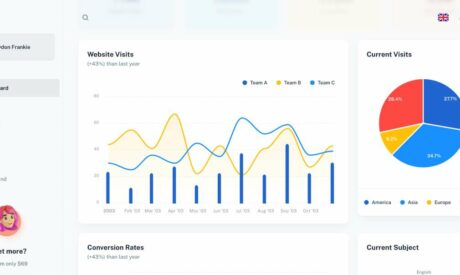




Comments